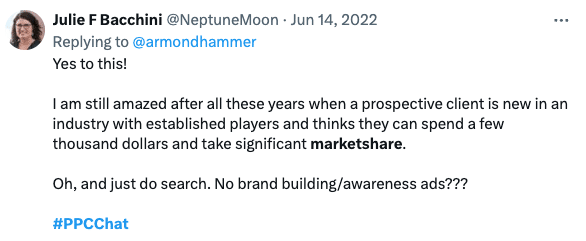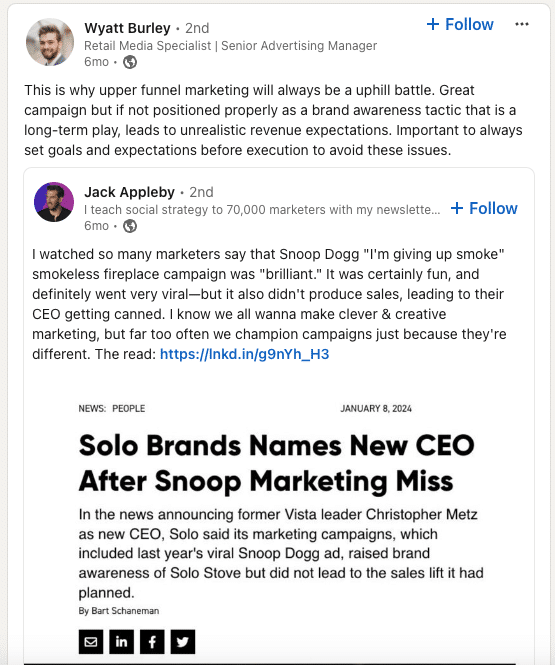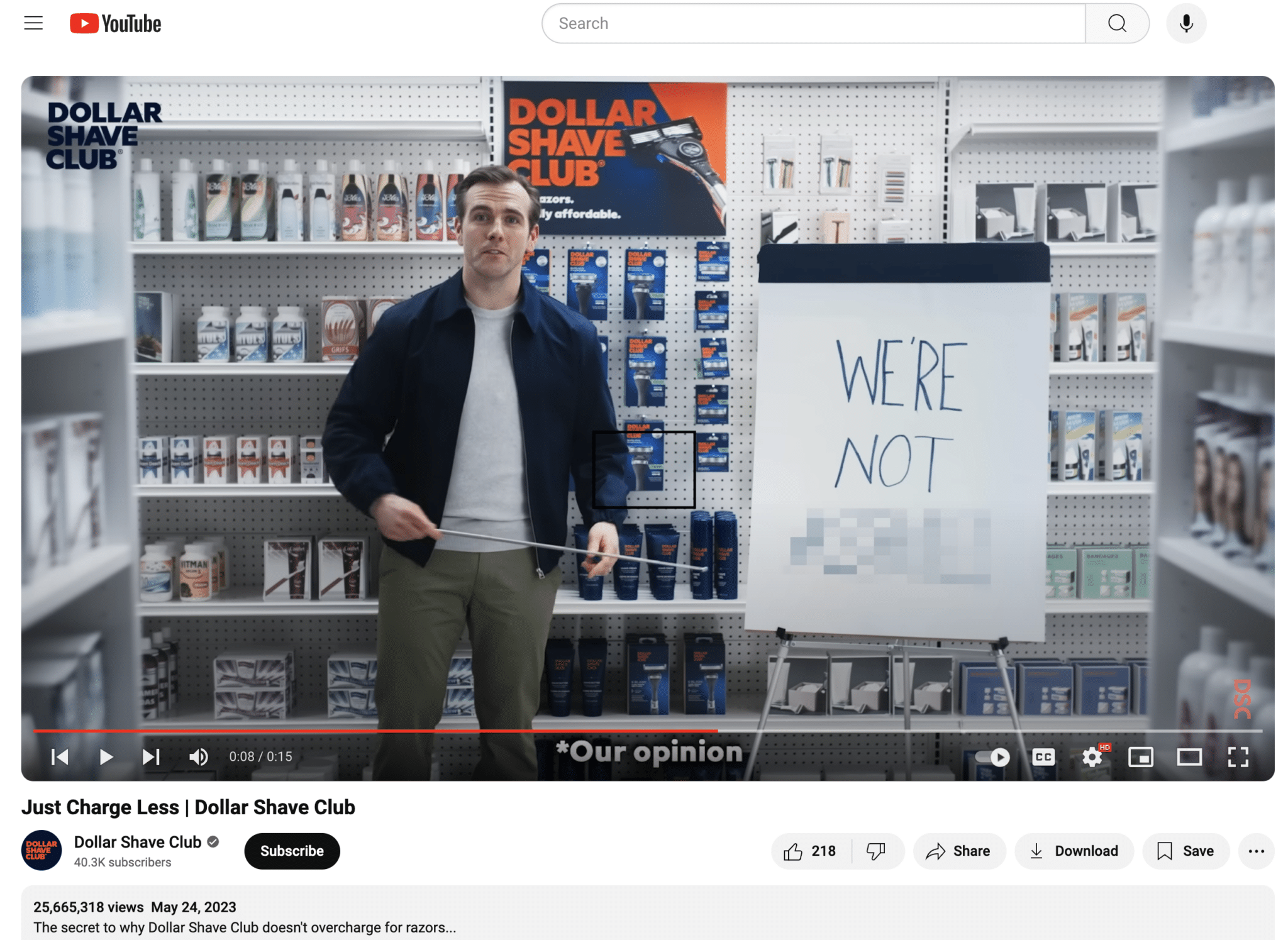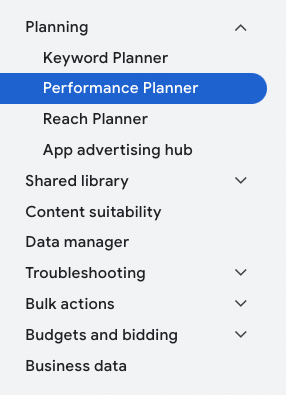
Addressing the tension between running efficient paid search campaigns and driving business growth is crucial. While building paid search accounts has become easier, using them effectively to grow a business is more challenging than ever.
Focusing solely on optimizing for maximum return on ad spend (ROAS) and the lowest cost-per-lead (CPL) may yield short-term gains, but overemphasizing these efficiency metrics can hinder long-term business growth.
Understanding the efficiency vs. growth trade-off lets you make smarter decisions for your business and create paid marketing campaigns that align with long-term business goals.
The importance of aligning paid search with business goals
Search campaigns, once known for delivering highly efficient, immediate returns, have long been the cornerstone of the paid search industry.
Google Ads’ real-time bidding model and emphasis on transactional search intent made search campaigns groundbreaking for marketers, especially since this channel was historically highly measurable.
However, PPC has evolved, and today’s advertisers face a more complex environment. Increasingly complex match types, a broader range of advertising channels and new all-encompassing campaign types like Performance Max and Demand Gen have challenged the channel’s traditional efficiency.
While cost efficiency is important, a narrow focus hinders long-term growth and makes advertising repetitive and uninspired. The outdated mindset of “I’ll give you $5, and you must give me $10 in return,” oversimplifies the complex dynamics of effective marketing.
Successful paid search advertising in 2024 requires a balanced approach that aligns with overall business goals. Marketing needs to be centered around customer acquisition, retention, brand building and, ultimately, creative campaigns that move humans toward action.
The pitfalls of overemphasizing efficiency
Short-term gains and long-term growth are often at odds in paid search marketing. While a singular focus on metrics like the lowest CPL and the highest ROAS can yield immediate results, these metrics may also restrict an advertiser’s ability to grow the business.
This narrow focus often leads to a conservative approach that prioritizes lower-funnel campaign types at the expense of upper-funnel campaigns.
Building brand awareness and nurturing potential customers through upper-funnel efforts is essential for sustained growth. However, the challenge of directly attributing revenue to campaigns like YouTube has made these ads less attractive to many advertisers.
As a result, the industry has seen a reliance on short-term, conversion-focused campaigns, which are very binary and limiting to business growth.
The value of upper-funnel campaigns
Upper-funnel campaigns are crucial in building brand equity and nurturing potential customers. At a time when there is more AI-generated bland content than ever before, humans are craving connection, humanity and community.
Video is a fantastic way to start building this familiarity and trust and increase the likelihood that customers will consider a brand when they are ready to purchase. Leverage YouTube advertising to be seen as a leader and trusted resource.
Upper funnel campaigns attract leads in the early stages of the buyer’s journey or even those who are problem-unaware. Advertisers showcasing engaging content differentiate themselves and make a memorable impression.
PPC expert Julie F. Bacchini highlights the importance of upper-funnel strategies despite their less immediate returns.

On LinkedIn, there was a discussion about Solo Stove’s partnership with Snoop Dogg – a campaign that some considered a “marketing miss.”

While it increased brand awareness, the lack of immediate sales uplift led to the CEO’s dismissal, reflecting a culture focused on short-term metrics.
Balancing efficiency and growth
To strike a balance between efficiency and growth, advertisers should:
Diversify campaigns
Incorporate upper-funnel, mid-funnel and lower-funnel campaigns to create a comprehensive strategy that supports both immediate and long-term goals. Also, recognize that humans want to talk to humans when evaluating which campaigns are important in a holistic strategy.
Leverage data and analytics
Use data to track key performance indicators (KPIs) across all stages of the funnel and adjust strategies accordingly. Additionally, understand that we can’t always measure every action perfectly every single time.
Take a step back and consider what metrics align with long-term business goals. While efficiency is important, it should not be the sole focus. Define other success metrics like brand awareness, customer retention and lifetime value.
Invest in creative
Allocate resources toward creating engaging and memorable ads that differentiate your brand and build trust with potential customers. Don’t rely solely on performance-based ads for short-term gains.
Invest in SEO and content marketing
Alongside paid search, invest in SEO and content marketing to build a strong foundation for future growth. As paid search platforms are increasingly saturated, it is important to have a marketing strategy that leverages all customer moments.
Focus on the big picture
Take a step back and examine the overall business goals. How can paid search help achieve those goals in the short term and the long term?
Dollar Shave Club is a brand that exemplifies this balanced approach. They disrupted the traditional razor market by focusing on a clear value proposition, humorous advertising and a subscription-based model and achieved significant growth.

When marketers consider growth in the traditional way, they focus on singular metrics. For brands like Dollar Shave Club, advertising creates consumers who return and interact with them because of a greater value than the product itself. Their marketing strategy includes an entertainment factor.
Dollar Shave Club might have faced what some would consider wasted ad spend with this strategy. However, the campaign led to significant business growth, making the investment worthwhile in the long run.
Leveraging data and analytics for balanced campaigns
Aligning metrics is important to achieving a balanced approach in paid search. Here are some key strategies to help align metrics to what matters most.
Set clear objectives and KPIs
Define specific goals for each stage of the funnel, from awareness to conversion. This will help you track performance accurately and make informed decisions.
For instance, setting a 10x ROAS goal for a YouTube campaign may cause it to be paused. However, by utilizing the brand lift studies available on the Google Ads platform, advertisers can justify the campaign’s effectiveness and the associated creative costs.
Utilize descriptive analytics
Analyze past performance to understand what has worked and what hasn’t, providing valuable context for the metrics.
Rather than viewing metrics in isolation after a campaign, this approach allows advertisers to consider the results over time and gain deeper insights into the campaign’s overall impact.
Implement predictive analytics
Use historical data to forecast future trends and outcomes, anticipate market changes and proactively adjust campaigns.
Google Ads offers a Performance Planner tool for Search campaigns and Performance Max, allowing users to forecast how their campaigns will react to adjustments in budget and objectives.

A spreadsheet provides a comprehensive overview. Below is an example designed to forecast the impact of campaigns on platform revenue.
This tool allows decision-makers to assess their investment and impressions across various stages of the marketing funnel, helping to establish a strong presence in awareness campaigns.

While focusing solely on impressions is often discouraged, a brand aiming for growth must ensure its presence at every stage of the marketing funnel.
Using impression-based metrics helps determine the allocation of resources and avoid the tendency to overallocate resources to conversion campaigns.
This example is adaptable to include additional channels, such as Facebook and programmatic display. A consistent forecasting approach for all paid media channels gives advertisers a holistic view of their marketing efforts and helps with informed budget planning.
Adopt prescriptive analytics
Go beyond predictions by using data to recommend the best course of action and optimize your campaigns for better results.
Prescriptive analytics is when the paid search expert goes the extra step to recommend a specific course of action.
Paid search is both an art and a science. Prescriptive recommendations, often framed as “do this” statements, are based on data and help advertisers focus on achieving their business goals.
For example, the prescriptive recommendation “increase budget by 20% for consideration campaigns” lets an advertiser achieve their goal of driving more conversions long term and ultimately increasing revenue over time.
Navigating the trade-offs between PPC efficiency and sustainable growth
The future of paid search lies in striking a balance between efficiency and growth. Advertisers need to adapt their strategies to keep up with changing trends.
While immediate returns are important, investing in long-term strategies for brand awareness and customer loyalty is equally crucial.
Diversifying campaigns, leveraging data and investing in YouTube, paid social, programmatic, SEO, and content marketing helps businesses create a sustainable strategy that drives both immediate results and future growth.
source https://searchengineland.com/the-high-cost-of-ppc-efficiency-445105

0 Comments